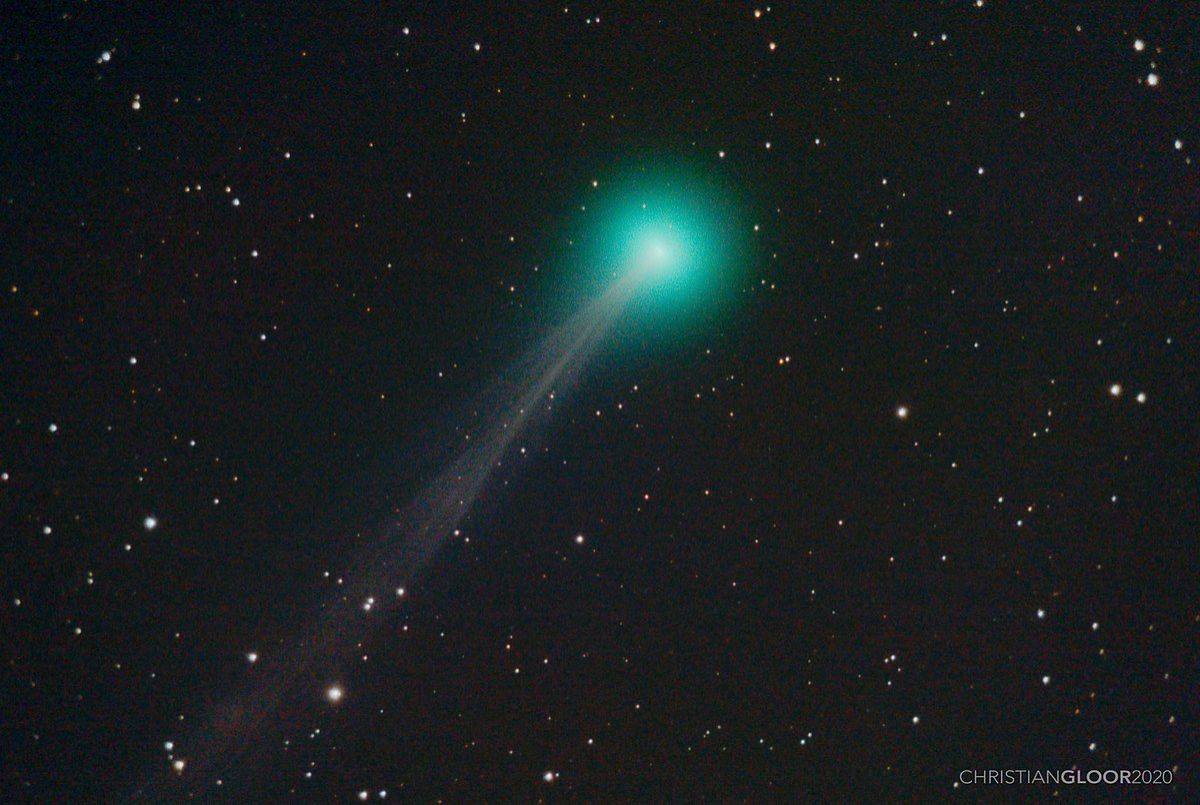Follow us on Google News (click on ☆)
Named C/2025 R2 (SWAN), the first comet was spotted on September 12th thanks to NASA's Solar Dynamics Observatory, which constantly monitors our star. The SWAN instrument, designed to study the solar wind, allowed Ukrainian amateur astronomer Vladimir Bezugly to identify the comet in the images. Officially classified by the International Astronomical Union, it follows an orbit of approximately 22,554 years. In other words, the last time it passed near Earth, humanity was still living in the ice age.

Comet C/2020 F8 (SWAN), discovered in 2020, shows the appearance that C/2025 R2 (SWAN) might have
Image Wikimedia
Currently near the Sun and mostly visible from the southern hemisphere, C/2025 R2 (SWAN) will approach Earth on October 21st. It will pass at only 0.27 astronomical units, or about 40 million kilometers (25 million miles) (one-quarter of the Earth-Sun distance). Its brightness could then reach magnitude 4, making it perceptible to the naked eye under a dark sky. Astronomers even estimate that Earth might pass through a debris cloud in early October, creating an unusual meteor shower.
At the same time, another comet, C/2025 A6 (Lemmon), discovered in January from Arizona, will also reach its closest point to Earth around October 21st. Its magnitude is also expected to be around 4, making it visible without instruments. The nights from October 20th to 23rd, just after the new moon and during the peak of the Orionids, will therefore offer ideal conditions for observation.
The last bright comet visible to the naked eye dates back to 2020, with NEOWISE. Seeing two at the same time is a very rare event. However, specialists remind us that comet brightness is unpredictable: some fade quickly or fragment. But everyone is encouraged to try their luck, with binoculars or a small telescope to fully appreciate the details of their comas and tails.
Long-period comets
Long-period comets, like C/2025 R2 (SWAN), originate from the Oort Cloud, a vast region located at the outer reaches of the Solar System, several trillion kilometers (trillions of miles) from the Sun. This icy reservoir hosts billions of cometary nuclei that can take tens of thousands of years to complete one orbit.
A gravitational disturbance — for example, the passage of a nearby star — can propel a comet towards the inner Solar System. As it approaches the Sun, its ices sublimate, releasing jets of gas and dust that form the coma and tails (two can be observed) visible from Earth.
Unlike short-period comets (like Halley, which returns every 76 years), long-period ones can only be observed once. Their study provides valuable clues about the primitive materials that existed during the formation of the Solar System, 4.5 billion years ago.
Magnitude in astronomy
Magnitude is a scale used to measure the apparent brightness of a celestial object. The lower the value, the brighter the object:
- the Sun: magnitude -27,
- the full Moon: magnitude -13,
- the faintest stars visible to the naked eye: magnitude +6.
A comet with a magnitude of 4 is therefore visible without instruments in a dark sky, far from light pollution. In the city, using binoculars is recommended to distinguish the coma or any potential tails.
However, magnitude predictions remain uncertain: comets are unpredictable, their activity can intensify... or fade abruptly. But in the case of SWAN and Lemmon, the autumn of 2025 is already shaping up to be a prime period for observation.